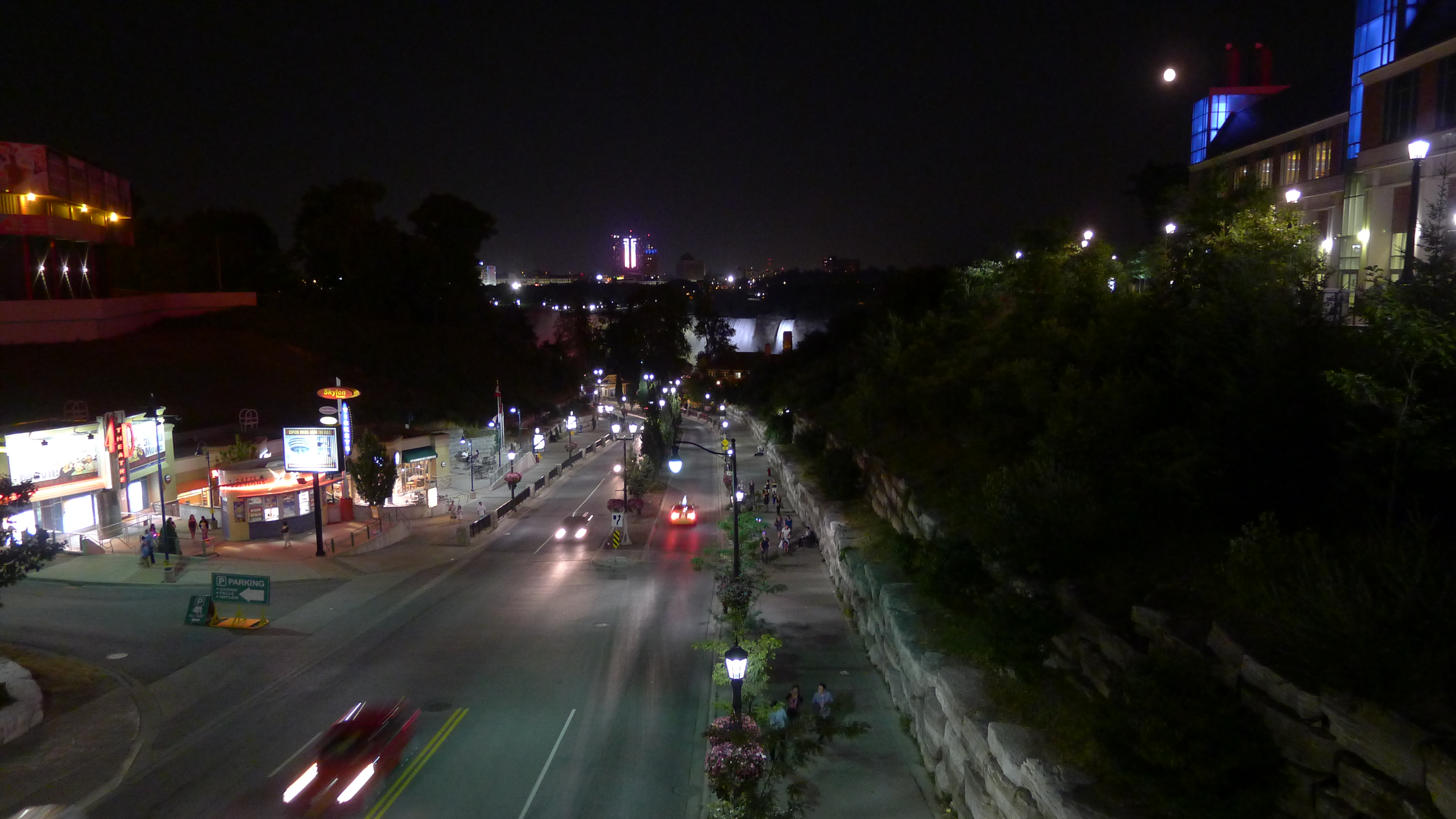Hao Wang (Murray Street, Niagara Falls)

Murray Street (Night View), Niagara Falls
Murray Street, named after Lieutenant General John Murray of the British Army, ran from Drummond Road to the shore of Niagara River, as depicted in the photo. In 1764, the Treaty of Niagara was signed by Sir William Johnson and 24 indigenous nations from the Haudenosaunee, Seneca, Wyandot of Detroit, Menominee, Algonquin, Nipissing, Ojibwa, Mississaugas, and others who were part of the Seven Nations of Canada and the Western Lakes Confederacy. The treaty transferred the possession of a four-mile strip of land along the Niagara River’s western shore, and provided for a set of constitutional promises revolving around peace, friendship and respect between indigenous people and the Crown. Reflecting a collective response of indigenous people to the Royal Proclamation 1763, the treaty stands to be one of the “most fundamental document” of constitutional source of the country. As a landmark in the Constitutional history of Canada, s.35(1) of the Constitution Act 1982 for the first time afforded constitutional protection over “existing aboriginal and treaty rights of the aboriginal peoples of Canada.”
GPS Coordination: 43.083848° N, 79.079851° W
This content has been updated on 25 February 2017 at 14 h 01 min.